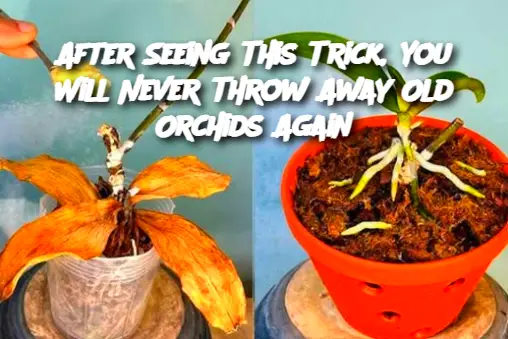Water your orchid sparingly, allowing the bark to dry out between waterings. Orchids prefer a soak-and-dry cycle.
Avoid overwatering, as it’s the most common cause of orchid failure. Use room-temperature, filtered water if possible.
5. Provide the Right Environment
Place your orchid in indirect sunlight—a bright windowsill is ideal. Avoid direct sun, which can scorch the leaves.
Maintain a warm, humid environment. If your home is dry, use a humidity tray (a shallow tray filled with water and pebbles) or mist the plant occasionally.
6. Fertilize Regularly
Feed your orchid with a balanced orchid fertilizer once a month. During the dormant period (after blooms fall), use a low-nitrogen fertilizer to encourage root and stem growth.
7. Be Patient
Orchids often go through a rest period after blooming. During this time, they focus on strengthening their roots and leaves.
With proper care, most orchids will rebloom within 6–12 months. You’ll notice a new flower spike or « keikis » (baby orchids) emerging.
Extra Tips to Make Your Orchid Thrive:
Ice Cube Watering: For easy care, use 2–3 ice cubes per week instead of traditional watering. The slow melting mimics gradual hydration.
Use Banana Peel Water: Steep a banana peel in water for 24 hours and use the nutrient-rich solution to feed your orchid once a month.
Monitor for Pests: Check leaves and roots for signs of pests like mealybugs or mites, and treat promptly with natural remedies.
Why This Trick Works
Orchids are resilient plants adapted to survive in challenging conditions. By pruning dead parts, refreshing their environment, and giving them proper care, you encourage the plant to reallocate its energy towards new growth and blooming.
Once you see your orchid bloom again, you’ll be amazed at its beauty and longevity. With these tips, you’ll never feel the need to throw away an old orchid again! 🌺✨
